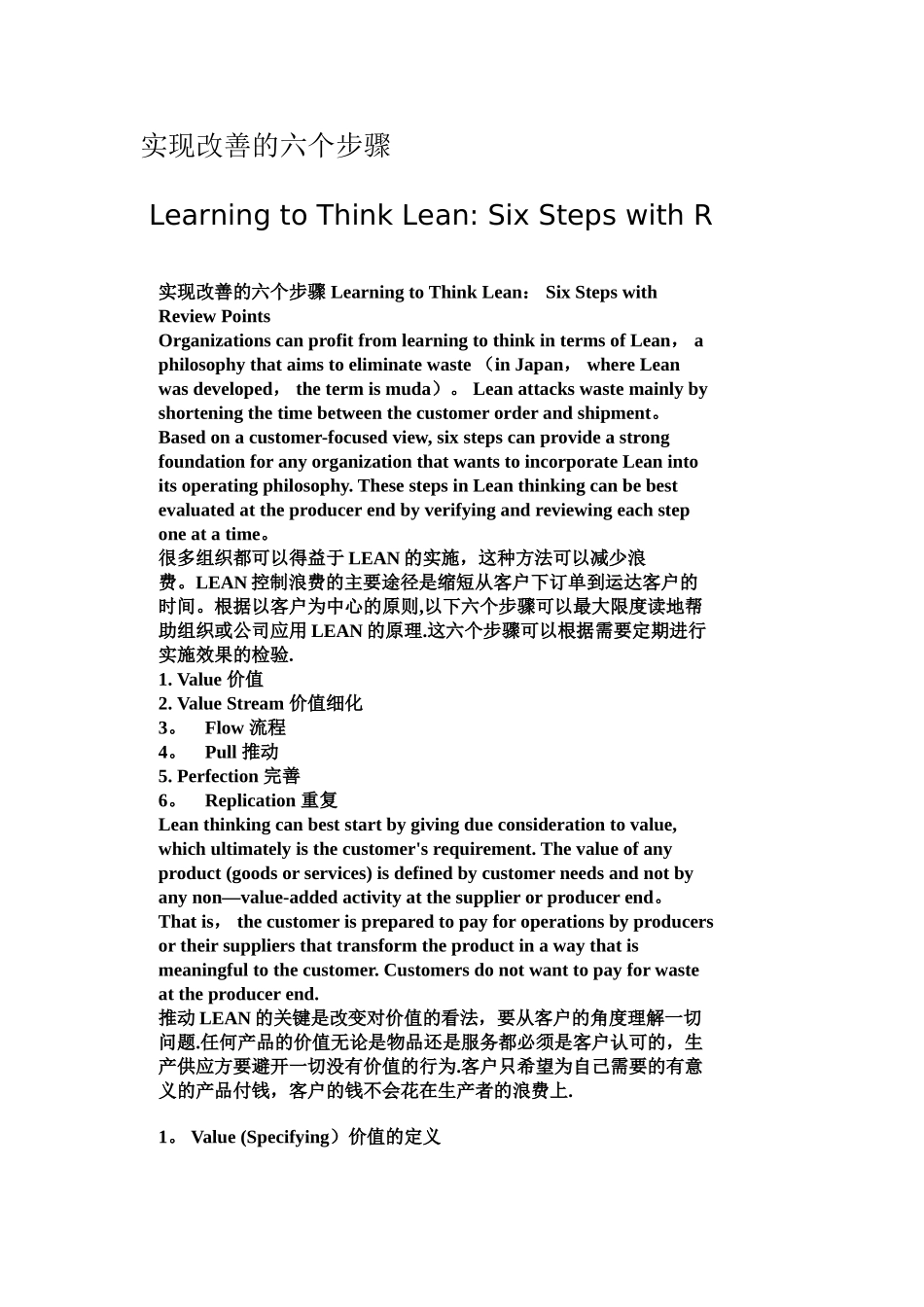实现改善的六个步骤 Learning to Think Lean: Six Steps with R 实现改善的六个步骤 Learning to Think Lean: Six Steps with Review PointsOrganizations can profit from learning to think in terms of Lean, a philosophy that aims to eliminate waste (in Japan, where Lean was developed, the term is muda)。 Lean attacks waste mainly by shortening the time between the customer order and shipment。 Based on a customer-focused view, six steps can provide a strong foundation for any organization that wants to incorporate Lean into its operating philosophy. These steps in Lean thinking can be best evaluated at the producer end by verifying and reviewing each step one at a time。很多组织都可以得益于 LEAN 的实施,这种方法可以减少浪费。LEAN 控制浪费的主要途径是缩短从客户下订单到运达客户的时间。根据以客户为中心的原则,以下六个步骤可以最大限度读地帮助组织或公司应用 LEAN 的原理.这六个步骤可以根据需要定期进行实施效果的检验.1. Value 价值2. Value Stream 价值细化3。 Flow 流程4。 Pull 推动5. Perfection 完善6。 Replication 重复Lean thinking can best start by giving due consideration to value, which ultimately is the customer's requirement. The value of any product (goods or services) is defined by customer needs and not by any non—value-added activity at the supplier or producer end。 That is, the customer is prepared to pay for operations by producers or their suppliers that transform the product in a way that is meaningful to the customer. Customers do not want to pay for waste at the producer end.推动 LEAN 的关键是改变对价值的看法,要从客户的角度理解一切问题.任何产品的价值无论是物品还是服务都必须是客户认可的,生产供应方要避开一切没有价值的行为.客户只希望为自己需要的有意义的产品付钱,客户的钱不会花在生产者的浪费上.1。 Value (Specifying)价值的定义 Value is determined by the...


